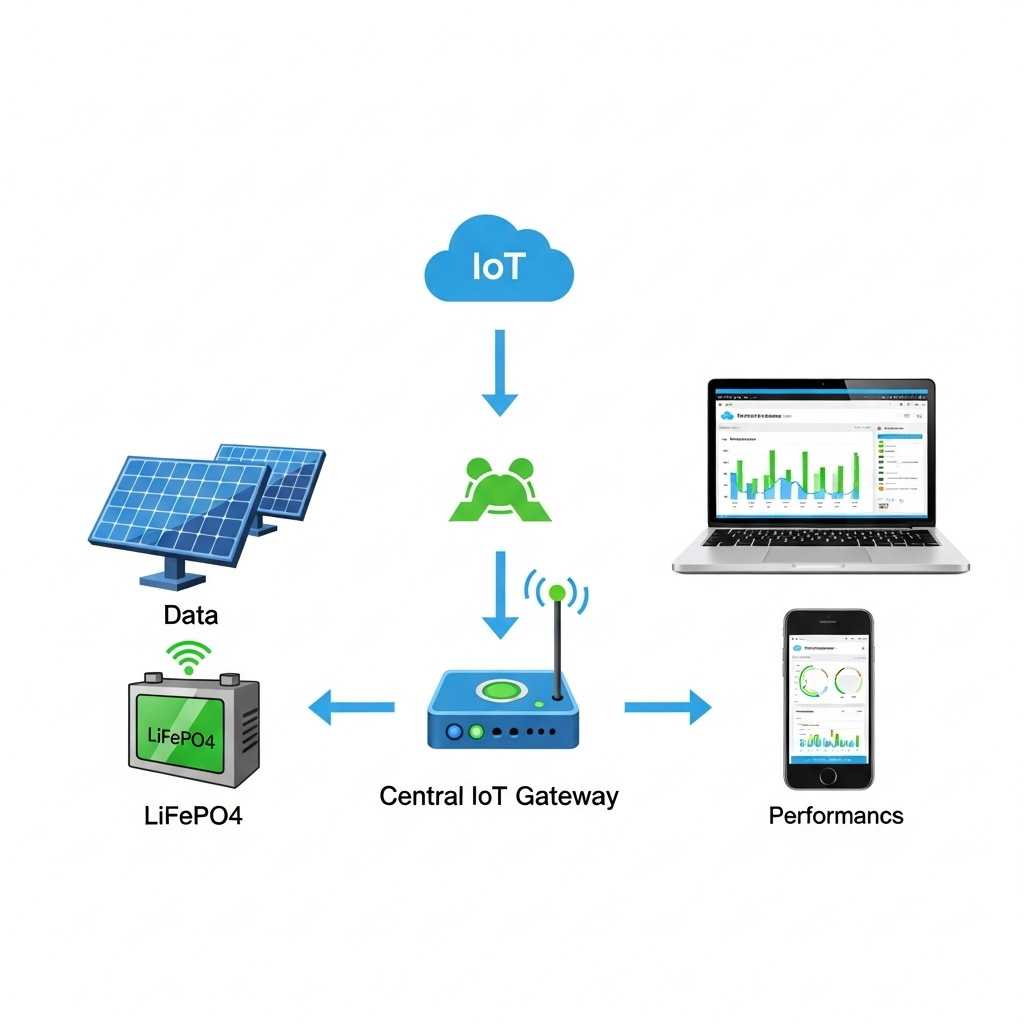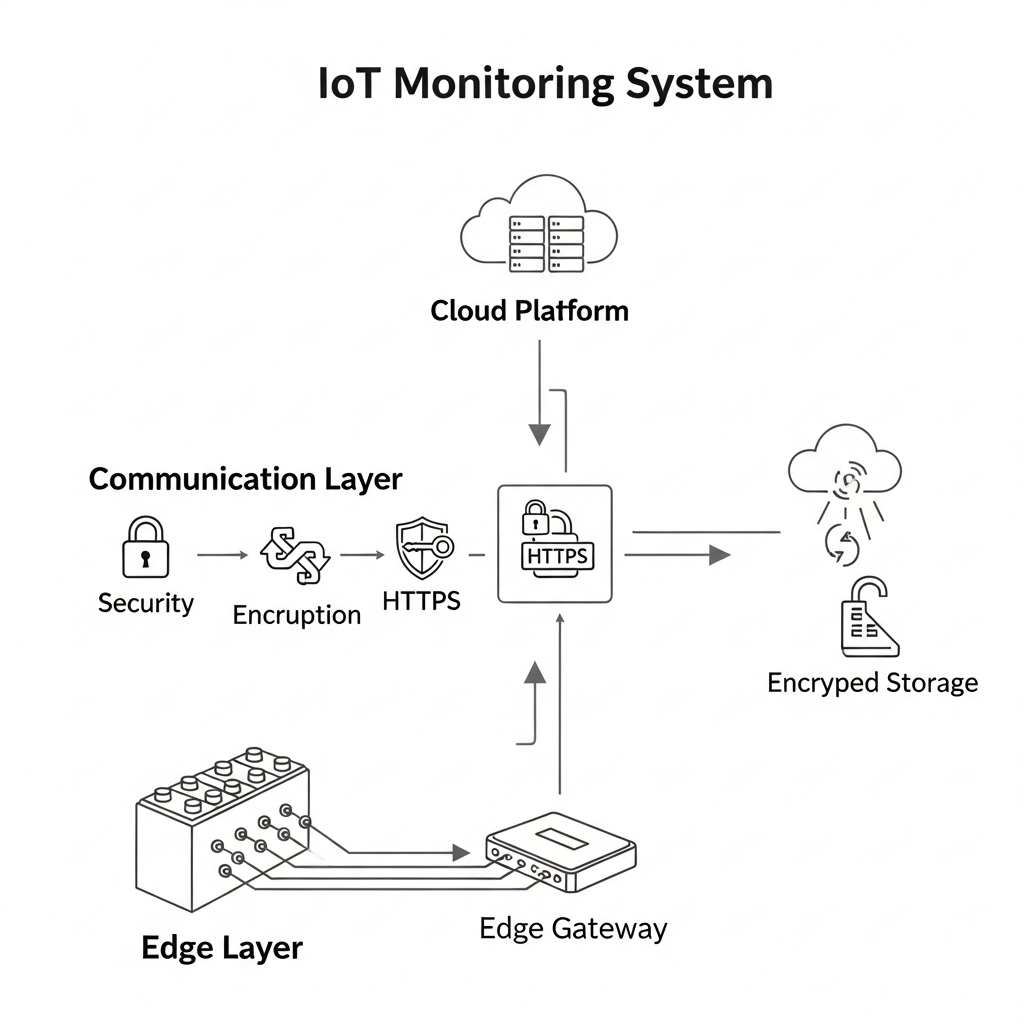Managing a large fleet of battery-powered assets, whether in electric vehicles or distributed energy storage systems, presents a significant operational challenge. Failures can be costly, leading to downtime, expensive repairs, and reputational damage. The traditional approach of reactive maintenance—fixing things after they break—is no longer sufficient. A modern strategy is required. Cloud-based Battery Management System (BMS) diagnostics offer a powerful solution, leveraging the Internet of Things (IoT) to provide deep insights into battery health and performance across an entire fleet.
The Growing Challenge of Managing Distributed Battery Fleets
As energy systems become more decentralized, the number of battery assets in the field is rapidly increasing. Each battery is a complex electrochemical system, and managing hundreds or thousands of them simultaneously requires a sophisticated approach. Without a centralized view, operators are often flying blind, unable to spot developing issues until it's too late.
From Reactive to Proactive Maintenance
Reactive maintenance is inefficient. It results in unexpected downtime and often requires emergency call-outs, which are more expensive than planned service visits. The goal is to shift towards proactive, or even predictive, maintenance. According to a report from the International Energy Agency, increasing sophistication in operations and maintenance (O&M) can help target maintenance efforts, minimizing wasted resources. Cloud BMS diagnostics provide the data needed to make this shift. By analyzing real-time and historical data, you can identify patterns that precede failures and schedule maintenance before a critical issue occurs.
The Data Silo Problem
A common issue in large-scale operations is the data silo. Different assets may use hardware from various manufacturers, each with its own proprietary monitoring software. This fragmentation makes it nearly impossible to get a unified view of the entire fleet's health. An effective IoT fleet monitoring platform breaks down these silos. It standardizes data collection and provides a single dashboard for all assets, regardless of the underlying hardware. This unified visibility is crucial for reliable system operation.
What is Cloud BMS Diagnostics?
Cloud BMS diagnostics is a technology that connects the on-board BMS of each battery in a fleet to a central cloud platform via IoT. This connection enables the continuous collection, storage, and analysis of critical operational data. The result is a comprehensive overview of every asset's real-time status and long-term health trends.
Core Components: From Edge to Cloud
The architecture consists of several key layers. At the 'edge' is the BMS itself, which monitors individual cell voltages, temperatures, and current. This data is then transmitted by an IoT gateway device to the cloud. As noted in the IEA's analysis on System Integration of Renewables, having real-time communication of data describing a power plant's output is essential for reliable operation. The same principle applies to battery fleets. The cloud platform acts as the central brain, ingesting this data, running advanced analytics, and presenting actionable insights to operators through a web-based interface.
Key Data Points and Analytics
A cloud BMS platform tracks numerous parameters to assess battery health. The most important include:
- State of Charge (SoC): The current charge level of the battery.
- State of Health (SoH): An indicator of the battery's remaining capacity compared to its original design capacity.
- Cell Voltage and Temperature: Monitoring individual cells helps detect imbalances or thermal issues early.
- Cycle Count: Tracking the number of charge/discharge cycles helps predict lifespan.
The platform uses this data for anomaly detection, identifying deviations from normal operating behavior. It also enables predictive analytics to forecast potential failures, allowing for timely intervention.
The Tangible Benefits of IoT Fleet Monitoring
Implementing a cloud diagnostics solution delivers measurable improvements in reliability, performance, and operational efficiency. It transforms fleet management from a constant fire-fighting exercise into a data-driven, strategic operation.
Enhancing Reliability and Reducing Downtime
The primary benefit is a dramatic increase in fleet reliability. By detecting early warning signs—such as a single cell overheating or a module holding less charge than its peers—the system can trigger an alert. This allows a technician to be dispatched to investigate and resolve the issue before it escalates into a complete system failure. This proactive approach minimizes unplanned downtime and avoids the high costs associated with catastrophic failures.
Optimizing Performance and Lifespan
Cloud analytics can do more than just prevent failures. It can optimize the performance of the entire fleet. By analyzing charging and discharging patterns, the system can recommend strategies to maximize battery lifespan. To achieve this, it's important to monitor the right metrics. A detailed guide on solar storage performance highlights key indicators that are crucial for evaluating system health. Applying these principles at a fleet scale allows operators to benchmark assets against each other, identify underperforming units, and implement corrective actions to improve overall efficiency.
| Metric | Without Cloud Diagnostics | With Cloud Diagnostics |
|---|---|---|
| System Uptime | ~95% (Reactive) | >99% (Proactive) |
| Maintenance Costs | High (Emergency Repairs) | Reduced by 20-30% (Planned Maintenance) |
| Average Battery Lifespan | Standard Lifespan | Extended by 10-15% (Optimized Use) |
| Failure Detection | Post-Failure (Alarm) | Pre-Failure (Predictive Alert) |
Streamlining Compliance and Reporting
For many applications, especially those connected to the grid, demonstrating compliance with technical standards is mandatory. A study on Grid Codes for Renewable Powered Systems emphasizes that in-operation monitoring is a key part of compliance verification. Cloud platforms automate the collection and logging of performance data, making it simple to generate reports for regulatory bodies. This saves significant administrative effort and ensures a transparent, auditable record of fleet operations.
Implementing a Secure and Scalable Cloud Diagnostics Platform
Choosing and implementing the right platform is critical for success. The system must be secure to protect sensitive operational data and scalable to grow with your fleet.
Prioritizing Data Security
Security is paramount in any IoT system. Data must be protected both in transit and at rest. Look for platforms that use industry-standard encryption protocols. As detailed in an IRENA publication on Quality infrastructure for smart mini-grids, best practices include using TLS 1.2 for encrypted outbound connections and strong encryption like 128-bit AES for data in transit. The platform should be designed to prevent unauthorized access from the outside, ensuring data integrity and confidentiality.
Ensuring Scalability and Interoperability
Your fleet will likely grow over time. The chosen platform must be able to scale seamlessly, handling data from tens to thousands of assets without a drop in performance. Furthermore, it should be built on open standards to ensure interoperability. This allows you to integrate batteries and hardware from different vendors without being locked into a single proprietary ecosystem, providing long-term flexibility and control over your operations.
A Forward-Looking Perspective
Cloud BMS diagnostics represent a fundamental shift in how battery fleets are managed. By harnessing the power of IoT and data analytics, organizations can move beyond reactive maintenance and unlock new levels of reliability and efficiency. This technology empowers operators with the visibility and foresight needed to keep their systems running smoothly, maximize asset value, and support the transition to a more electrified and decentralized energy future. Investing in a robust fleet management IoT platform is no longer an option; it is a strategic necessity for long-term success.
Disclaimer: This information is for educational purposes only and does not constitute financial or investment advice. Consult with a qualified professional before making any decisions regarding your energy systems.
Frequently Asked Questions
What kind of fleets can benefit from cloud BMS diagnostics?
Any organization managing a distributed fleet of battery systems can benefit. This includes operators of electric vehicle charging networks, residential and commercial energy storage systems, industrial equipment, and telecommunication backup power.
How secure is the data sent to the cloud?
Reputable platforms use robust security measures. This typically includes end-to-end encryption for data in transit (like TLS 1.2) and encryption for data at rest in the cloud. Connections are authenticated using digital certificates, and network architecture is designed to prevent unauthorized inbound access.
Does this technology replace the need for on-site technicians?
No, it empowers them. Instead of reacting to failures, cloud diagnostics allow technicians to work proactively. They receive detailed alerts about which specific asset needs attention and what the likely problem is. This makes their work more efficient, targeted, and effective, reducing diagnostic time on-site.





Leave a comment
All comments are moderated before being published.
This site is protected by hCaptcha and the hCaptcha Privacy Policy and Terms of Service apply.